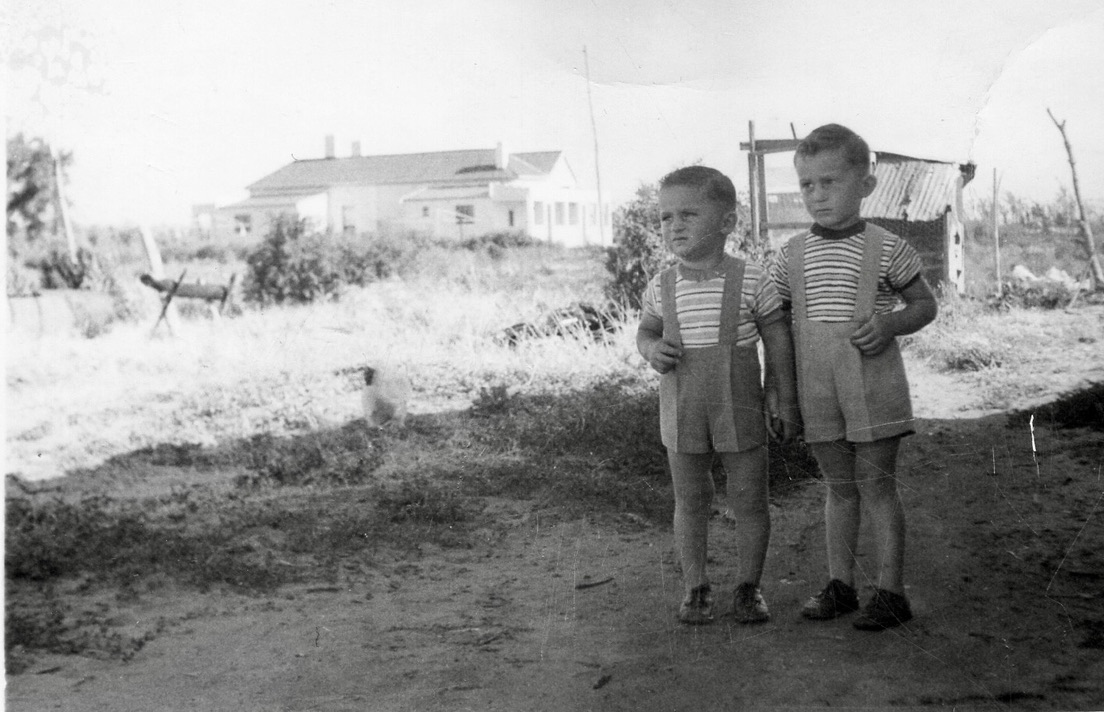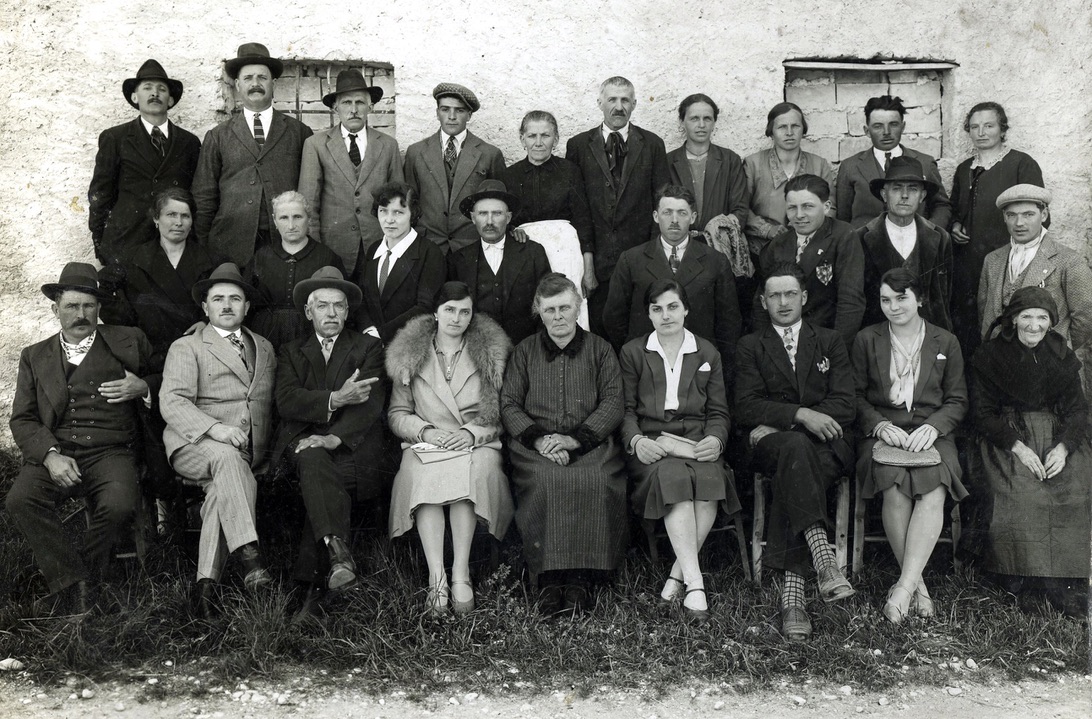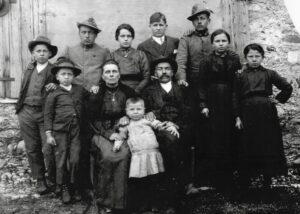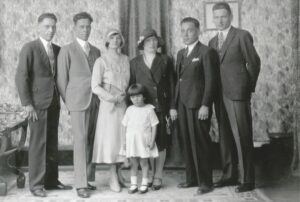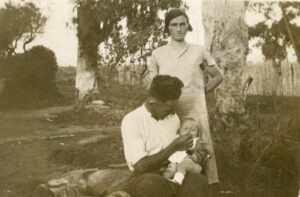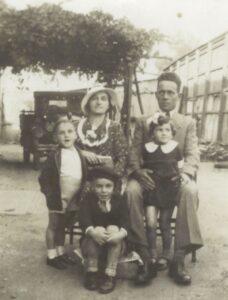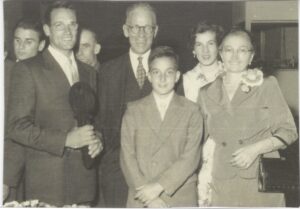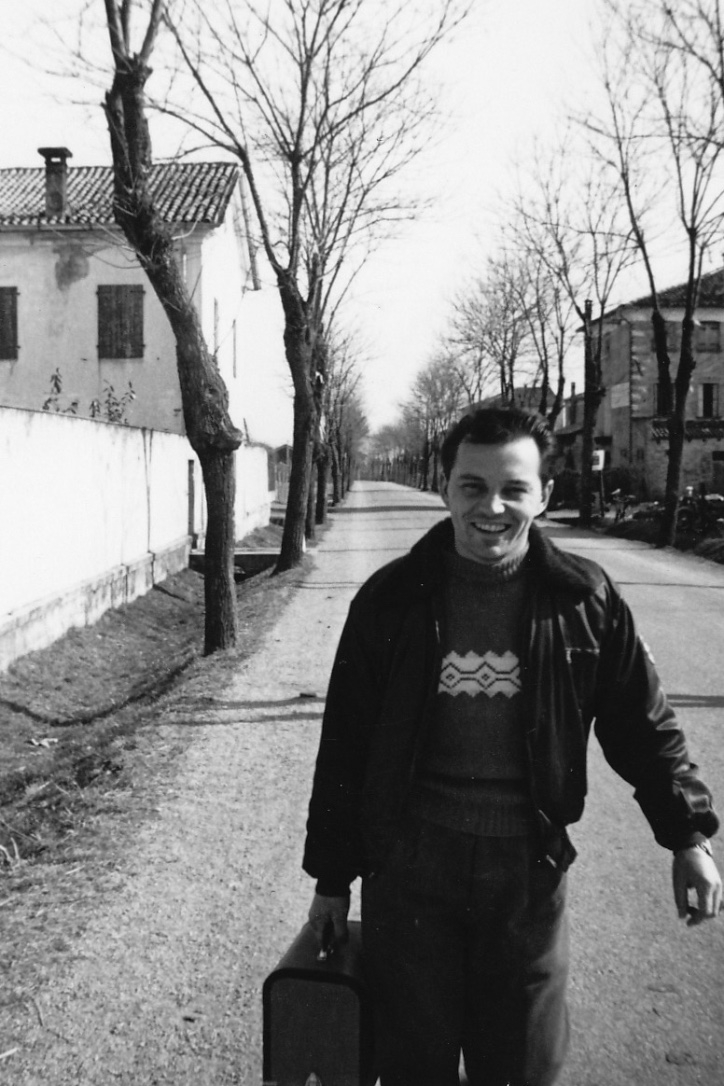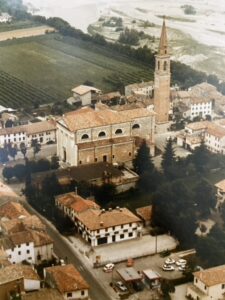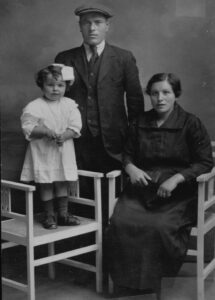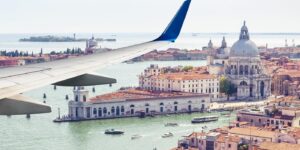This blog, written by Angelo Piovesan, is the first of two parts that outline the history of his family’s migration from the Veneto to Adelaide after the Second W0rld War.
Having followed the Veneto Market Gardeners blog very closely for years and having read the many other family stories, I am very conscious that nearly everyone of them comes with a common background story. They are usually about a family fleeing poverty and hunger in Italy and finishing up in a baracca (or shed) for a home when they arrived here in South Australia.
I hope my family’s story provides a slightly different view to your stories and helps revive some more of your own family’s precious memories of migration.
My father’s family
My father Mario was born in Ponzano Veneto on 9/06/1914, a small town approx. 5 kms N/NW from the centre of Treviso, which itself is approximately 30 km N of Venice.
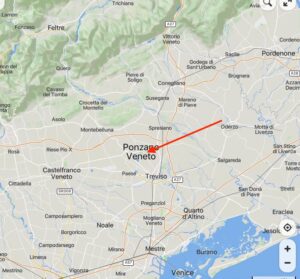
Dad was the youngest of six surviving children and four out of the five males emigrated – three to Adelaide (Angelo in 1927, Attilio in 1937 and Mario eventually in 1950 – all to the Findon / Kidman Park area) and the other, zio Leone, eventually to Caracas in Venezuela in 1949. The eldest son, Beppi, who married in 1927 was the only one to remain in the old family home, raising his own family of five children and looked after his parents. Nonno died on the morning of 5th August 1934, just after zia Rosalia had left their home for Adelaide to reunite with Angelo after their proxy wedding! Dad’s sister Amelia lived at home until she married in April 1947 but died unexpectedly in July 1951, leaving zio Beppi and his family to raise her young children aged one and three years old.
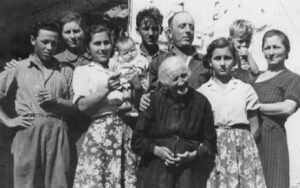
My mother’s family
My mother, Vittoria Teso, was born a few kilometres away on the outskirts of San Pelaio (sometimes spelt Pelagio) on 31/07/1922. She was the third eldest of six surviving children (5 girls and a boy) from ten full term pregnancies. Her mother died the day before Mum’s 11th birthday and less than a week after giving birth to her last child (also named Angelo) – who went on to live for only 11 months. The three eldest girls, including Mum, helped raise the four younger children, but very soon there were only three remaining. Mum was the only one in her family to emigrate.
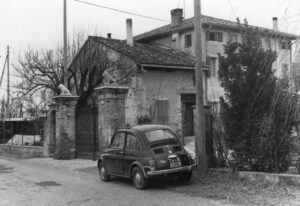
My father’s life 1929 – 1946
When Dad was about 15 years old, he and zio Leone had left home to work in a carrozzeria (a car repair shop) in Milan. After Dad had later completed his Italian compulsory Military Service at the end of 1935, both zio Leone (with his young family) and Dad had gone to Ethiopia in 1935 and 1936 respectively to find work. There, Dad was eventually required to re-enlist in the army with the outbreak of fighting in the Second World War in Africa. He was then taken as a prisoner of war (PoW) by the English in 1941. Zio Leone and family, on the other hand, were taken as civilian PoWs and sent to separate camps. Aunty and her young children were repatriated to Italy some 12 months later on a vessel arranged by the Red Cross.
Whilst a PoW in Africa, Dad’s experience with machinery enabled him to volunteer and be assigned for about two and a half years to a prisoner working group with about 5 wheat heading machines, under the command of a Maltese Lieutenant. Their job was to tour the length and breadth of Ethiopia and Kenya reaping/stripping wheat because their menfolk were all off fighting the war with the English.
Dad then volunteered to be sent to London to work in the British Naval warehouses along the Thames for the remainder of WW2. The boat trip to England lasted approx. 40 days around the Horn of Africa. They were in such poor health when they arrived in London, that they were fed and rested for nearly a month before being put to work on the wharves. As prisoners of war in England, they were very well cared for and often had days off on weekends to go to watch the soccer! The soldier PoWs were returned to Africa after the end of WW2 and Dad was eventually discharged from the Italian army there on 29/04/1946.
My parents meet and marry
My parents met after my Dad returned to Italy. He obviously impressed her and thus began a very brief courtship before the lack of regular work in the area forced Dad to move once again – this time to Belgium. He went with his eldest nephew Sante (13 years younger) to work in a Steel Foundry with many other Italians in the small town of Tubize – approx. 30 km from Brussels.

Whilst in Belgium, Dad kept writing to Mum and they were eventually married by proxy in September 1948. Mum joined Dad in Belgium where they lived and worked for over a year and Mum became fluent in French, thanks to lessons from the landlady.
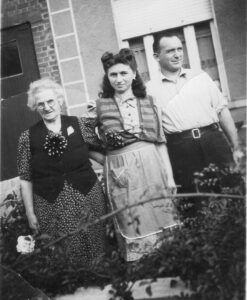
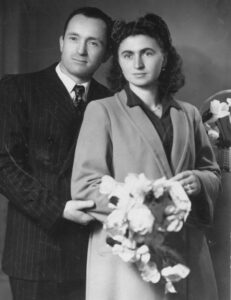
Migrating to Australia
Although they applied to migrate to Australia and Argentina, their Australian application was the first to be approved and they returned to Ponzano to complete their travel documents. They boarded the Sebastiano Caboto in Genova on 28/12/49, bound for Australia in 3rd class with segregated men’s and women’s quarters below deck. Mum was eight months pregnant and spent most of the trip below deck, suffering from sea-sickness!
After disembarking in Melbourne on 29/01/1950, zio Attilio met them and they flew to Parafield Aerodrome – as Adelaide Airport did not exist then.
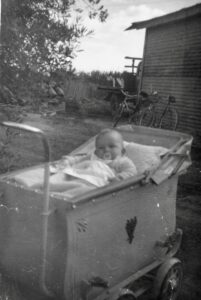
Despite being in the middle of summer, Mum wore an overcoat on the flight to disguise the fact that she was nine months pregnant. The three of them were picked up from Parafield by truck and taken to Kidman Park. Zio Attilio had previously purchased a small fibro-clad transportable home or a baracca for them. It was located on Eugenio ‘Marena’ Zalunardo’s land on Grange Road. I was born on 2/02/1950 a few days after my parents arrived and was named after my zio Angelo, who had died in March 1949. Mum gave birth to me in Quambi Hospital on South Terrace (now St Andrews Hospital) where she was very fortunate to find a doctor who spoke French!
Early years in Adelaide
Mum remembered the sweltering +40°C heat and having to fan me so I could sleep, living in what seemed to be furnace. She looked out onto a barren paddock and thinking to herself, “What have I done?” She had come from a beautiful three-storey, solid, stone home to this!
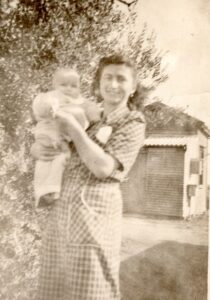
After several months, the baracca was shifted from Marena’s land to zio Attilio’s own land, West of Frogmore Rd on what is now 19 Hoskin Ave, Kidman Park. It was placed right next to the Western boundary with zia Rosalia Piovesan’s land which was on Frogmore Road. In those days, the balance of the land around us was not used for growing vegetables but for cattle grazing.
There was no plumbing connected to the house, apart from the rainwater tank supply, and the waste water from the house kitchen sink ran out into a bucket under the kitchen window, from which the cattle drank. The primitive bathing and copper / laundry facilities were located in a shed next to the house. The shed also housed a work bench and at times the large box in which the young chickens were raised.
When the cattle rubbed their backs on the corners of the house, they would shake the poor house so much that Mum feared it would fall off its timber support posts about a foot off the ground. There was an approx. 1m x 1m slab of concrete outside the front door and the land around the house was all covered in three-cornered jacks, so when Mum wanted to confine me to the house – she would simply take my shoes away!
When zio Attilio walked down from his house on Frogmore Rd to work his land and saw me standing outside the front door, he would say: to mare vaccha te ha porta via le scarpe da novo! (“Your cow of a mother has taken your shoes away again!”) I remember him as a fluent user of coarse language and he taught me to swear at a very young age!
Mum had to walk up the track to Frogmore Road some 200 metres away to place the billy can for the milk vendor’s delivery by horse and cart, and then again to collect it – dodging the snakes on her way! Mum told us that when they cleared the bushes along the track, there were so many snakes that climbed over the bulldozer and the driver was forced to abandon his vehicle!
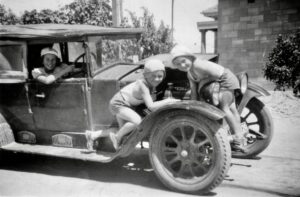
As a four-year old, I remember walking across our chook yard and my foot fell into a rat’s burrow, and a rat which seemed about 6-8 inches long jumped out and ran across the chook yard!
Connections with other Veneto families
Our nearest neighbours were the Schievenin family who lived in another house next to ours on zio Attilio’s land. The Piovesan and Santin families lived no more than 200m away, whilst the Tonellato families lived a bit further up Frogmore Road. We lived there for just over four years during which time very strong bonds were formed with the Tonellato and the Santin families – who already had established long standing friendships with zia Rosalia and zio Attilio’s families. These strong bonds also extended to the many other Italian families scattered around the area on Frogmore, Valetta, River Road (now Findon) and Grange Road – including the Rebuli, Zalunardo and Ballestrin families – all of whom were from the province of Treviso in the Veneto region.
Behind the Santin’s house on Frogmore Road was the bowling / bocce alley where Dad and friends often played bocce there on a Sunday afternoon.
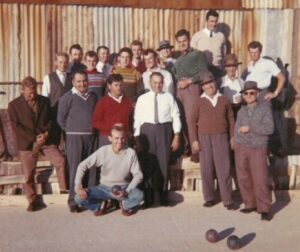
Their other option was to play borella just across the paddock at Leandro Bortoletto’s home (see below).
Changes
Zio Attilio bought a small parcel of land after he sold his original land holding which had been substantial. He sold it to the SA Housing Trust just before we arrived in 1950. The homes built there on Grange Road became some of the earliest SA Housing Trust homes to be constructed in the Western suburbs at Kidman Park. At that stage was right on the fringe of the metropolitan area.
This land sale and the resultant housing expansion would eventually put enormous pressure on some of the remaining market gardeners to relocate their operations to Bolivar from 1959.

When the Schievenin family departed, zio Attilio’s house was rented by Leandro and Maria Bortoletto and their young family. Leandro had worked with zio Attilio in his Mica mine in central Australia. Leandro added a borella lane to his place where I earned some pocket money as a youngster on Sunday afternoons – returning the balls to the bowlers and re-setting the three pins! I had to hide behind a shelter whilst they were throwing/ tossing their wooden balls (which would hit the pins on the full!), to make sure a stray ball did not hit me on the head and kill me!
Leandro Bortoletto later became one of a small group of Veneti responsible for coming up with the idea of forming our Veneto Club in the early 1970s.
Angelo Piovesan
21 May 2023
All photos except for the images of the bocce group and the Bortoletto group were provided by Angelo.
